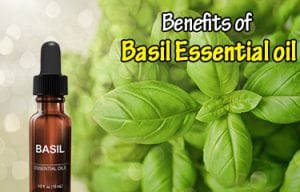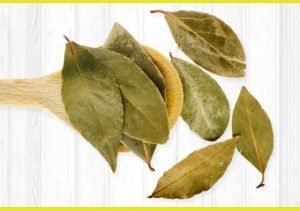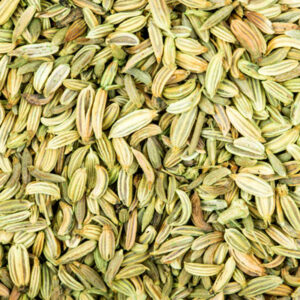What is Oolong Tea?
It is a powerful composition tea of nutrients and minerals which has its origin in China sometime between the years 618-907. Earlier it was grown in the phoenix mountain area of the Fuhjian province. The place was known as Beiyun and hence the tea was also called Beiyun tea. It was popular for its earthy taste and exotic flavor.
It was discovered by the Song dynasty (960-1279) who made it a tribute tea. When tea was sent to the royal family as gift it was called tribute tea. Thus soon the local people, monks and government officials also started patronizing this tea for its taste. Its fame spread far and wide. In the year 1725 people of the Fujiyan region improvised on this tea which was then called Oolong. Today this tea is grown in different areas and is known for its distinct flavors.
Composition Of Oolong Tea
Oolong tea is a semi fermented tea. Unlike green tea which is unfermented and green in color and the black tea which is completely fermented and black in color. Like any standard tea it is rich in antioxidants. It also contains vitamins like vitamin A, B, C, E and K. Minerals like calcium, copper, manganese, selenium, caroin and potassium are also present in the tea. Since it is not completely processed it has a good amount of polyphenolic compounds. It also contains a good amount of caffeine, theophylline and theobromine which stimulate the nervous system.<
Benefits Of Consuming Oolong Tea
There are a number of health benefits with consumption of Oolong tea.
1. Oolong Tea For Weight Loss
Consuming Oolong tea aids in the fat metabolism of the body. The polyphenols contained in the tea help in burning of fat of the body. They activate some of the enzymes which get the fat cells ticking and working. Thus drinking Oolong tea on a daily basis helps in controlling obesity. This is one of the important Oolong tea benefits.
2. Anti-Cancer Property
The polyphenol content in the tea retards skin cancer growth. Consuming Oolong tea on a regular basis also helps in prevention of stomach cancers too. Polyphenols stop the growth of carcinogenic cells, genotoxic agents and N-nitroso cells. Constant consumption of Oolong tea also reduces risks of ovarian cancer in women.
3. Helps In Better Mental Functions
The caffeine in the tea ensures that you are alert and aware. This brings in improved mental performance and kind of energy to go about your chores.
4. Neutralizing The Free Radicals In The Body
Polyphenols in the Oolong tea also work as strong antioxidants. They help to get rid of free radicals in the body. A high number of free radicals in the body is one of the causes of cancers, heart diseases, arthritis and diabetes. By consuming Oolong tea every day you can neutralize the free radicals to a very large extent.
5. Gets Rid Of Skin Ailments
People who consume Oolong tea 3 times in a day see great changes to their skin health. Ailments such as eczema can be eliminated from the body by constant consumption of the tea. Long term effects over 6 months or so help in seeing its effects. Effects due to the irritation of the skin and atopic dermatitis can also be reduced by consumption of Oolong tea regularly.
6. Provides For Healthy Bones
Drinking Oolong tea on a continuous basis helps in maintaining proper bone health. The bones retain the minerals in the body and there is less of leeching. This is seen in people who drink tea on a continuous basis for over 10 years or so. Thus ailment such as osteoporosis is avoided.
7. Controls Blood Sugar
Oolong tea is found to control and balance blood sugar levels. It could be taken as a supplement along with other blood sugar lowering medicines. It ensures that the body does not get in very low blood sugar levels especially in the case of type 2 diabetics. Since it helps in regulating blood sugar levels in the body, you do not see highs and lows of blood sugars in the blood.
8. Managing Stress Levels
People who consumed Oolong tea on a regular basis are seen to keep their stresses under control. Both the polyphenols and the L-theanine which is an amino acid are found to play a role in this. They help in blocking of receptors in the brain which normally sense the stress and cause increased cognitive activity and neural response. Thus the brain is at rest and no stress is seen by the body.
9. Rich Source Of Vitamin C
Since the tea contains a good amount of vitamin C it helps in the building of immunity in the body. It is also good for the skin.
10. Other Benefits
Consumption of Oolong tea has other benefits too. They include reducing tooth decay, lowering of cholesterol in the body and relaxing the bronchial muscles. It also helps in regulating the body temperature.
Tastes of Oolong Tea
The taste of the tea leaves depends a lot on the processing methods used and the brewing style. With oxidation levels varying between 8% to 80%, the flavor of Oolong tea varies between the raw green tea and the strong fermented black tea. The tea leaves are also shaped into curls and strands which affect the aroma of the tea. Every step in the production of this tea has an effect on the final taste of it. Thus depending upon the popular taste of people the master involved in the processing of tea ensures that it is met. There are varied flavors to the Oolong tea like earthy, nutty, flowery, fruity etc. Depending on when the leaves are picked and the processing method, dictates it all.
To retain the flavor the original Oolong tea you need to store it in a cool dry place in an air tight container. If exposed to air due to enzymatic reactions oxidation will take place which is likely to alter the aroma of the tea. It is best refrigerated to ensure that the flavors are kept to a large extent. Once kept in the refrigerator it should always be kept there. If it sees cycles of warmth and cold it could again affect the flavor of the tea.
You will love these amazing reasons to have a cup of chamomile tea for health!
Processing Steps In Production Of Oolong Tea
There are basically 8 steps in the processing of Oolong tea from the picking of the leaves to the final product which is the tea leaves for consumption.
1. Withering
After the tender tea leaves are picked from the plants they are all mixed up intentionally. This is to enable the oxidation process to start. After this the leaves are laid out in the sun to dry. This is to ensure that the moisture content of the leaves is lost and it starts rolling up. This makes the leaves more supple and easy to roll later on.
2. Cooling
After being exposed to the hot sun the leaves are cooled down. This is to ensure that withering is complete and leaves wilt and flatten. When the shape of the leaves starts to change because of moisture content they are ready to be rolled.
3. Rolling
This is an important step in the processing. By rolling the leaves the cell walls are broken down to allow essential oils to seep out. This gives a particular aroma to the leaves and the final flavor. By lightly rolling the leaves the leaves are intentionally turned to the final required shape. The process of rolling also exposes the components from the leaves to oxygen which enhances the oxidation process.
4. Oxidizing
In this step the leaves are oxidized such that the required aroma and flavor is achieved. Thus how long the tea leaves are exposed to oxygen depends on the percentage of oxidation required to be done. It varies between 8 % to 80%. This brings about the change in color and flavor as desired by the tea manufacturer.
5. Roasting
Once the required oxidation is achieved further oxidation is halted by roasting. By exposing he tea leaves to heat most of the moisture content gets evaporated. Roasting the leaves also gives a scuttle taste to the leaves.
6. Final Rolling
This is the final stage of rolling in the process. The partially dried leaves are rolled into the expected shape. The leaves are rolled such that they get their final look and the expected flavor.
7. Drying
To ensure that the tea leaves are complete without moisture they are dried. This is to ensure a long shelf life and they don’t get spoilt while being stored.
8. Sorting
In this final step of processing, leaves are graded and sorted as per size and shape. Similar looking leaves are grouped together since they would have the similar flavor. This would result in different grades of tea with differences in flavors.
Let’s know what is matcha tea and its amazing benefits…
Oolong Tea Side Effects
- Is Oolong tea caffeinated? Oolong tea does contain a considerable amount of caffeine. This amount depends of how much the leaves are oxidized. Lesser oxidized leaves have lower content of caffeine while the higher oxidized leaves have higher content of caffeine. So people drinking more than normal amounts of Oolong tea should be aware of its side effects.
- Some people are very sensitive to caffeine. If these people consume Oolong tea regularly they might experience headaches, insomnia, vomiting and acidity like symptoms. Also in some patients who have diabetes, high blood pressure, heart diseases caffeine can amplify the symptoms of their diseases. They could experience increased anxiety, heartburn, sleeplessness etc.
- People who are taking regular medication of some kind should be careful about consuming Oolong ea. The tea could interact with the medications. The typical medications include blood thinners, medications used for irregular heartbeats, oral contraceptives, medications used in treating mental illnesses and heart medications.
- In some people continuous consumption of Oolong tea causes calcium to leech from the body. This has bad effects in people suffering from osteoporosis.
- The iron metabolism can also get affected by regular consumption of Oolong tea. This causes anemia and reduction of iron content in the body. The final result would be fatigue and people may not be able to go about doing their normal chores.
- Pregnant women are advised not to consume too much of Oolong tea. It is believed that the caffeine in the tea can reach the fetus by passing through the placenta wall. This could have a bad effect on the fetus.
- For people suffering from anxiety related disorders, kidney problems, stomach ulcers and heart problems it is advised not to consume Oolong tea. The tea acts as a diuretic and could affect the kidneys. It also raises the acid levels in the stomach causing heartburn and acidity.
Preparation of Oolong tea
Normally for a cup of Oolong tea which amounts to about 6 ounces 1 teaspoon of rolled up ball of oolong leaves or 2 teaspoons of large leaves can be used. To make the tea put the tea leaves in the cup. Next, pour in the boiling water which should be about 6 ounces. Allow the tea to steep for 2 to 5 minutes. Depending on how strong you want your tea you can steep it accordingly. Next, you can consume it while it is hot.
Different ingredients can be added to the tea to bring out varied flavors. Sometimes honey, lemon juice or peaches are also added to get the required tastes.
Oolong Tea Vs Green Tea
Different types of tea are produced from the same plant that is Camellia sinensis. Among the most popular ones are the green tea and oolong tea. They have a lot of health benefits and good taste too.
- The green tea flavor is mild and not as strong as oolong tea.
- Green tea is lighter in color too. Oolong tea is light brown in color and can have a taste of fruity to nutty or woody.
- With regards to health benefits of green tea, it scores higher than oolong tea. It is documented and proven.
- While oolong tea is sourced mainly from China or Taiwan, green tea is sourced from China or Japan.
- Green tea has a higher percentage of flavonoid content compared to oolong tea.
- With respect to caffeine content, green tea can contain up to 50 mg of caffeine in a 8 ounce mug while oolong tea can contain up to 72 mg.
- Camellia sinensis stores fluoride in its leaves. Green tea has about 0.3 to 0.4mg of fluoride in the leaves. Oolong tea contains about 0.1 to 0.2 mg of fluoride in its leaves. Thus drinking really obnoxious amounts of tea can give rise to fluorosis which is a health hazard due to excess fluoride. But it is found to be safe to drink up to 1 liter of tea in a day.
Where Can I Buy Oolong Tea?
You could buy oolong tea online from amazon.com. The various brands include True Elements, Pride of India and the Darjeeling tea.
Conclusion
Though there are a number of side effects of consuming Oolong tea, the benefits outweigh the disadvantages. This is especially true when you consume Oolong tea in moderate portions and it suits your body. Thus, Oolong tea positives cannot be overlooked.



















